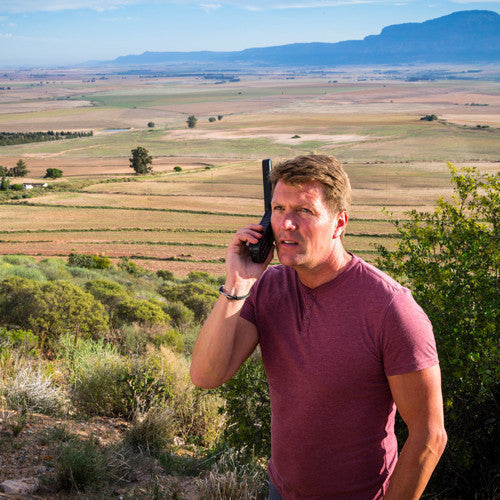Ultimate Guide to Hiking to Machu Picchu: Tips, Trails, and Preparation
Hiking to Machu Picchu offers an unparalleled journey into the heart of ancient Incan civilization, where history, mystery, and breathtaking natural beauty converge. Nestled high in the Peruvian Andes, Machu Picchu stands as a testament to the ingenuity and architectural prowess of its creators.
This UNESCO World Heritage site, often referred to as the “Lost City of the Incas,” draws adventurers and historians alike, intrigued by its enigmatic past and stunning mountain vistas.
Beyond its iconic status as one of the world’s Seven Wonders, Machu Picchu embodies a sense of discovery and wonder that transcends time. For those embarking on the Hiking to Machu Picchu via the legendary Inca Trail, the experience becomes not just a physical journey but a transformative adventure.

The trail, winding through diverse landscapes from high-altitude mountain passes to lush cloud forests, offers a glimpse into both the natural splendor and cultural richness of Peru.
Each step along the Inca Trail echoes with centuries of history, culminating in the unforgettable arrival at the Sun Gate, overlooking the ancient citadel of Machu Picchu.
This journey isn’t merely about reaching a destination but about immersing oneself in a tapestry of ancient traditions, rugged terrain, and the enduring spirit of exploration.
Prepare to be captivated, challenged, and ultimately rewarded by the profound experience of Hiking to Machu Picchu.
-
About Machu Picchu, Peru – One of the World’s Seven Wonders
Hiking to Machu Picchu unveils an ancient Incan citadel nestled amidst the Peruvian Andes, renowned for its profound historical and cultural significance. Built around 1450 AD and later abandoned, Machu Picchu remained hidden until its rediscovery in the early 20th century by Hiram Bingham.
Today, it stands as a testament to the ingenuity of the Inca Empire, showcasing remarkable architectural achievements amidst a stunning natural backdrop. Designated as a UNESCO World Heritage site, Machu Picchu spans over 80,000 acres of rugged terrain, attracting approximately one million visitors annually (pre-COVID).

Its intricate stone structures, agricultural terraces, and panoramic vistas captivate travelers from around the globe, offering not just a destination, but an unforgettable journey through history and nature.
-
Why Machu Picchu is Called the “Lost City of the Incas
Machu Picchu, nestled in Peru’s Cusco region, earns its title as the “Lost City of the Incas” due to its mysterious abandonment and subsequent rediscovery in the early 20th century by Hiram Bingham, an American explorer.
Constructed around 1450 AD during the zenith of the Inca Empire, this ancient citadel served as a royal estate for Emperor Pachacuti. Its intricate stone terraces and temples, impeccably crafted from white granite, stand as testaments to Incan architectural prowess and ingenuity.
The site’s strategic location, high in the Andes at nearly 8,000 feet, underscores its cultural and historical significance. Machu Picchu’s designation as a UNESCO World Heritage site highlights its importance not only as an archaeological marvel but also as a symbol of the rich heritage awaiting adventurers embarking on the journey of Hiking to Machu Picchu along the revered Inca Trail.
-
The Inca Trail: Overview and Importance
The Inca Trail is not merely a path but a historical pilgrimage route to Machu Picchu that winds through stunning Andean landscapes. This ancient network of trails served as the principal route connecting the Inca Empire’s capital, Cusco, to the sacred citadel of Machu Picchu.
Among its notable features is the Sun Gate, or Inti Punku, a pivotal entrance that provided ceremonial significance and served as a celestial observatory for the Incas. This gateway marks the final stretch of the journey, offering hikers their first breathtaking panoramic view of Machu Picchu nestled among the mist-covered peaks.

Today, hiking the Inca Trail to Machu Picchu remains a profound experience, blending physical challenge with cultural immersion, as adventurers follow in the footsteps of ancient civilizations, uncovering layers of history etched into the very stones beneath their feet.
-
How Hard and How Long is the Hike to Machu Picchu?
Hiking to Machu Picchu offers varying challenges tailored to different fitness levels. The classic Inca Trail spans 26 miles over rugged mountain terrain, typically completed in 4 days. This route involves steep ascents and descents, reaching altitudes of 4,200 meters (13,779 feet) at its highest point.
For those seeking a more relaxed pace, a 5-day option allows for extended exploration of ancient ruins along the way. Alternatively, a 2-day trek offers a condensed experience, culminating in a bus ride to Machu Picchu from Aguas Calientes.
Regardless of the route, the journey promises breathtaking vistas of Andean landscapes, diverse microclimates, and encounters with local flora and fauna. Hiking to Machu Picchu demands preparation but rewards with a profound connection to Incan history and natural beauty.
-
Planning Your Trip: Logistics and Permits
Securing Inca Trail permits is crucial as they regulate daily hiker numbers to preserve the trail’s integrity. Permits are limited and should be booked well in advance, especially for peak seasons like May to August. Alpaca Expeditions assists in securing permits efficiently, ensuring your preferred hiking dates are available.

Preparing for Hiking to Machu Picchu involves arranging transportation from Cusco to the trailhead and accommodations in Aguas Calientes or at campsites along the trail. Pack essentials like layered clothing, sturdy footwear, and a comfortable day pack. Alpaca Expeditions offers gear rental options, lightening your load for a more enjoyable trek.
-
Physical Preparation and Acclimatization
Physical readiness for Hiking to Machu Picchu includes cardio exercises and strength training to cope with challenging terrain and altitude changes. Mentally, visualize the journey and set realistic goals to boost confidence before embarking on the trek.
Cusco, at 3399 meters altitude, serves as a crucial acclimatization hub before Hiking to Machu Picchu. Spend at least two days exploring Cusco’s sights and adjusting to the altitude. This prepares your body for the higher altitudes encountered during the Inca Trail hike.
-
The Natural Environment of Machu Picchu
The Inca Trail boasts a rich biodiversity, with flora and fauna ranging from Andean condors to orchids and hummingbirds. Each ecological zone along the trail offers unique wildlife and scenic beauty, enhancing the Hiking to Machu Picchu experience.

From high-altitude passes to cloud forests, the Inca Trail traverses varied landscapes. Each zone showcases distinct vegetation and geological formations, providing hikers with awe-inspiring vistas throughout their journey to Machu Picchu.
-
Cultural Highlights and Side Trips
Beyond Hiking to Machu Picchu, explore ancient Incan ruins like Wiñay Wayna and Intipata. These sites offer insights into Incan civilization and spiritual practices, enriching your cultural immersion along the trail.
Extend your adventure with side trips from Cusco to sites like the Sacred Valley or Moray and Maras. These excursions delve deeper into Peru’s history and traditions, complementing your Hiking to Machu Picchu journey with diverse cultural experiences.
-
Tips for a Memorable Experience
Maximize your Hiking to Machu Picchu experience with practical tips: stay hydrated, pace yourself, and embrace the journey’s challenges. Respect the trail’s natural beauty and historical significance by practicing responsible hiking and leaving no trace behind.
Support sustainable tourism by choosing reputable tour operators like Alpaca Expeditions, known for ethical practices and community engagement. Minimize environmental impact by following designated trails, disposing of waste responsibly, and respecting local customs and wildlife habitats.
Wrapping Up
Embarking on the journey of Hiking to Machu Picchu via the legendary Inca Trail is more than just a trek—it’s a transformative odyssey through history and nature. From the awe-inspiring ruins of Machu Picchu to the rugged beauty of the Andean landscapes, every step offers a glimpse into the ancient world of the Incas.
Whether you choose the classic 4-day trek or a shorter adventure, the experience promises unforgettable moments and personal growth.
We specialize in crafting exceptional journeys that blend adventure with cultural immersion. Our knowledgeable guides, descendants of the ancient Incas, ensure a safe and enriching experience.
Whether you’re drawn to the challenge of the trail or the allure of Machu Picchu itself, we invite you to join us for an expedition that will leave you with memories to last a lifetime. Contact us today to start planning your Hiking to Machu Picchu adventure!
Alpaca Expeditions Recognitions
ISO (International Organization for Standardization)
In the pursuit to stand out from the rest, Alpaca Expeditions has obtained four ISOs plus our carbon footprint certificate to date. These achievements result from our efforts to implement the internationally-recognized integrated management system. They also represent our commitment to all of our clients and staff of operating sustainability and responsibility in every way possible.



































 Porters will carry up to 7 kg of your personal items, which must include your sleeping bag and air mat (if you bring or rent one). From us, these two items weigh a combined total of 3.5 kg.
Porters will carry up to 7 kg of your personal items, which must include your sleeping bag and air mat (if you bring or rent one). From us, these two items weigh a combined total of 3.5 kg.

